Publications
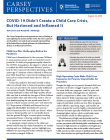
August 24, 2020
In this new Carsey Perspective, authors Jess Carson and Marybeth Mattingly describe the ways that the COVID-19 pandemic has strained the nation’s already-fragile early childhood care systems. Child care providers are struggling to address revenue losses associated with closures, fewer enrollments, and new safety guidelines. Meanwhile, demand for formal child care is shifting in yet-unknown ways,…
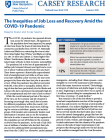
August 11, 2020
In this policy brief, authors Rogelio Sáenz and Corey Sparks discuss the wide variations in unemployment and the level of job loss during the COVID-19 pandemic across the nation’s demographic groups that have historically suffered disparities in the workforce, including persons of color, women, and immigrants. It is particularly unfortunate that the calamity of the pandemic comes on the heels of…

July 28, 2020
In this brief, author Aysha Bodenhamer describes how prevention failures in the coal mining industry have resulted in the resurgence of black lung disease. Caused by the chronic inhalation of coal and silica dust, black lung is progressive, incurable, life-altering, and fatal. Despite it being a preventable disease, black lung is resurgent among coal miners in Kentucky, Virginia, and West…
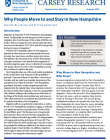
July 14, 2020
Migration is important to New Hampshire’s demographic future. Traditionally, the state has grown both because of migration into it and because of the surplus of births over deaths. However, recently all of New Hampshire’s population growth has been due to migration. In this brief, authors Kenneth Johnson and Kristine Bundschuh analyze data from the University of New Hampshire Survey Center’s…
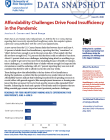
June 29, 2020
In this data snapshot, authors Jess Carson and Sarah Boege find that getting food is a problem for people experiencing food insufficiency during the pandemic, but affording food is the biggest challenge.
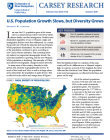
June 25, 2020
In this brief, author Kenneth Johnson reports that in 2019 the U.S. population grew at the lowest rate in a century because there were fewer births, more deaths, and less immigration. Fertility rates diminished regardless of race or Hispanic origin and immigration declines were also widespread. As a result, the growth rate of both the minority and non-Hispanic White population diminished. Yet,…
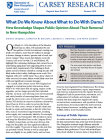
June 24, 2020
In this brief, authors Simone Chapman, Catherine Ashcraft, Lawrence Hamilton, and Kevin Gardner report the results of an October 2018 Granite State Poll that asked 607 New Hampshire residents how much they have heard, and their thoughts, concerning the question of whether older dams on New Hampshire rivers should be removed for ecological or safety reasons, or whether the dams should be kept.…
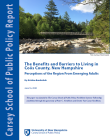
June 16, 2020
In this report, author Kristine Bundschuh identifies the benefits and barriers that emerging adults, age 18–25, perceive as they make the decision to stay in, leave, or return to Coös County, New Hampshire. The main draws to living in Coös are its family and community support systems. Those with local professional and educational plans, or who have purchased a home locally, experience additional…
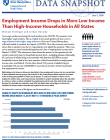
June 2, 2020
Low-wage workers are being hit much harder in the COVID-19 economic crisis than higher wage workers. This is evident in the much greater job loss in lower wage industries than higher wage industries.

May 20, 2020
National Center for Health Statistics data for 2019 show the lowest fertility rates on record and just 3,746,000 births—the fewest since 1985.
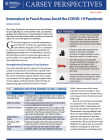
May 18, 2020
The COVID-19 pandemic has triggered income losses and rising demand for food-related support, while social distancing requirements have complicated access to usual nutrition support sites. In response, government agencies, private retailers, nonprofit organizations, and volunteer networks are undertaking innovative efforts to ensure food access by vulnerable populations. By highlighting…
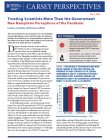
May 5, 2020
In this brief, authors Lawrence Hamilton and Thomas Safford report that despite a dramatic increase in the incidence of COVID-19, and an evolving government response, there was no significant change between surveys taken in mid-March and mid-April in the shares of New Hampshire residents who reported they were making “major changes” in their daily routines, had low confidence in the federal…
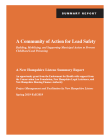
April 20, 2020
In this report, author Carrie Portrie summarizes A Community of Action for Lead Safety, a year-long effort to build cross-sector, municipal coalitions to leverage New Hampshire’s new lead laws.
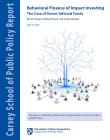
April 14, 2020
Donor-advised funds present a unique opportunity to promote impact investing into the local community, including Community Development Financial Institutions that serve their local communities.
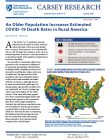
April 10, 2020
In this brief, author Kenneth Johnson estimates the influence that the local age structure has on coronavirus death rates among those exposed to it in rural and urban counties in the United States.
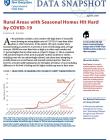
April 8, 2020
In this data snapshot, author Jess Carson finds that rural counties where at least 25 percent of the housing units are for seasonal use are hit especially hard by COVID-19 compared with urban and other kinds of rural counties.
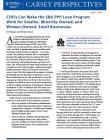
April 7, 2020
As currently being implemented by the Small Business Administration, the loans made available through the $349 billion Paycheck Protection Program, part of the CARES Act recently enacted to address the COVID-19 crisis, are likely to significantly bypass smaller small businesses and those that are minority- or women-owned.
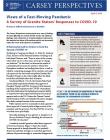
April 6, 2020
In this brief, authors Thomas Safford and Lawrence Hamilton report the results of a Granite State Panel survey (March 17-26), asking New Hampshire residents about their views concerning government responses to the coronavirus (COVID-19) and whether they changed their daily routine because of the pandemic.
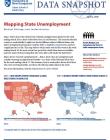
April 3, 2020
In this data snapshot, authors Michael Ettlinger and Jordan Hensley report the relative level of initial unemployment claims for the week ending March 28, and relative “insured unemployment” for the week ending March 21, each as a share of the (February) labor force.
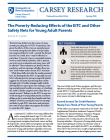
March 31, 2020
In this brief, Jess Carson explores the poverty-reducing effects of key federal safety net programs among 18-24 year old (“young adult”) parents.
